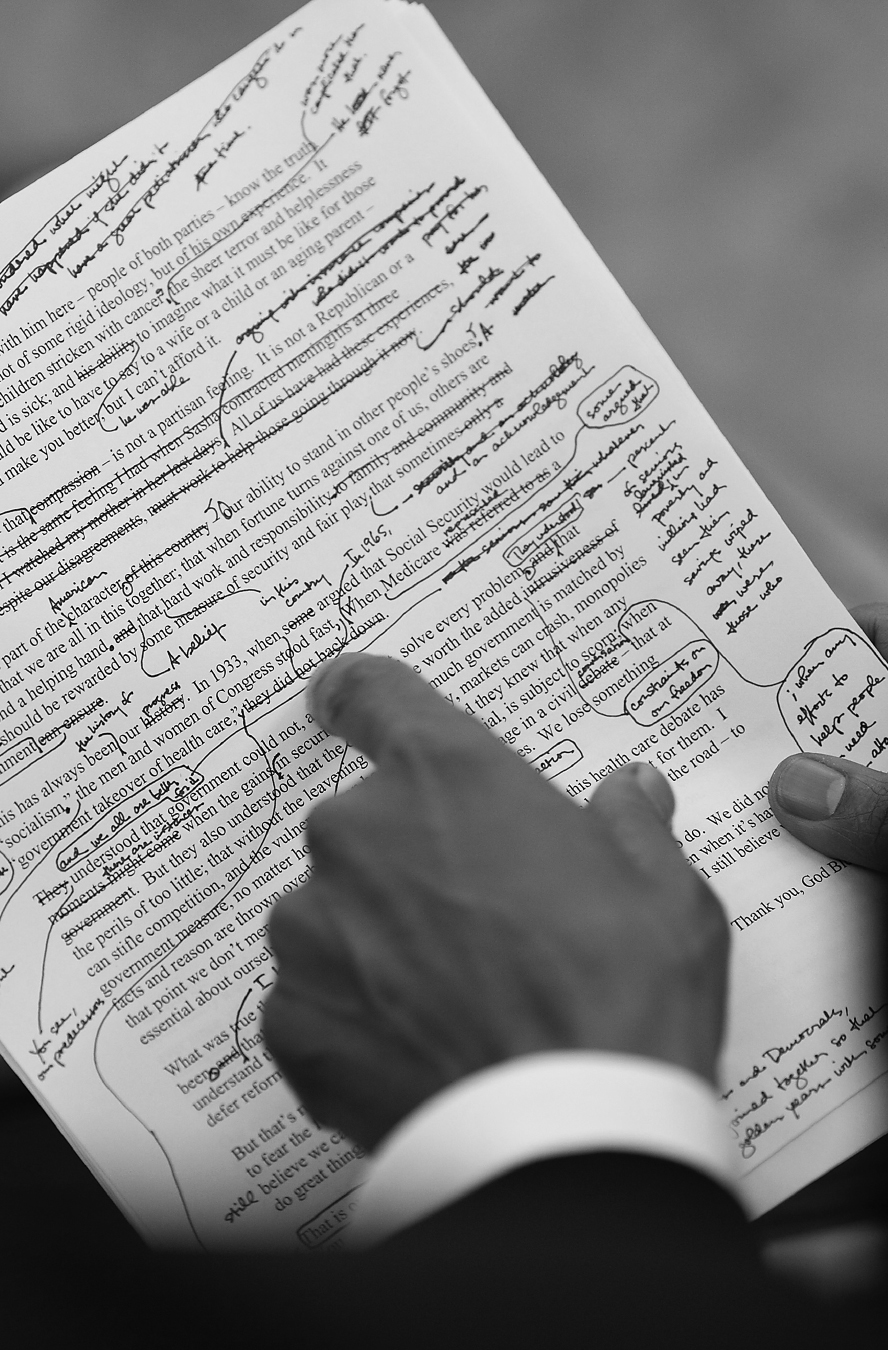12 Organizing, Writing, and Outlining Presentations
12 Organizing, Writing, and Outlining Presentations
Page 259

IN CHAPTER 12
Organizing Your Speech Points
Using Language That Works
Writing a Strong Introduction
Writing a Strong Conclusion
Outlining Your Speech
Look for LearningCurve throughout the chapter to help you review.
bedfordstmartins.com/commandyou
The Constitution of the United States of America makes a simple demand of the president: “He shall from time to time give to the Congress Information of the State of the Union, and recommend to their Consideration such Measures as he shall judge necessary and expedient” (art. 2, sec. 3).
For much of our nation’s history, the State of the Union address was a lengthy letter to Congress read by a clerk. But over time it has evolved into an elaborate and highly politicized annual affair that allows the president to present major ideas and issues directly to the public: the Monroe Doctrine (James Monroe, 1823), the Four Freedoms (Franklin D. Roosevelt, 1941), and the War on Terror (George W. Bush, 2002) were all detailed for the American people during State of the Union addresses (Longley, 2007).
And so each January, White House speechwriters face the daunting task of addressing both Congress and the nation with a speech that outlines what is going on in foreign and domestic policy in a way that flatters the president and garners support for his agenda for the following year. As if that isn’t difficult enough, speechwriters must also navigate a deluge of requests from lobbyists, political consultants, and everyday citizens eager to get their pet project, policy, or idea into the president’s speech. “Everybody wants [a] piece of the action,” lamented former White House speechwriter Chriss Winston in 2002.
CHAPTER OUTCOMES
After you have finished reading this chapter, you will be able to
Organize and support your main points.
Choose an appropriate organizational pattern for your speech.
Move smoothly from point to point.
Choose appropriate and powerful language.
Develop a strong introduction, a crucial part of all speeches.
Conclude with as much strength as you had in the introduction.
Prepare an effective outline.
Imagine that you are building a bridge, a skyscraper, or even a little house. You might have ambitious blueprints, but before you can build it, you need to form a solid foundation and develop a structurally sound framework. Any architect will tell you that even the most exciting and lofty designs are useless without these two crucial components. Skimp on either one and your structure will crack, shift, or collapse.
Building a speech follows a similar process. Whether you are writing a national address for the president of the United States or a three-minute class presentation, you will be unable to make your point if your speech is not structurally sound. As we discussed in chapter 11, you begin with your idea and then build your foundation with research and a clear thesis statement. The next step is to develop your framework—the overall structure of your presentation. In this chapter, we’ll focus on organizing all your ideas and information into a clear and practical framework and integrating them into a well-written speech. Let’s begin by considering the main points of your speech.